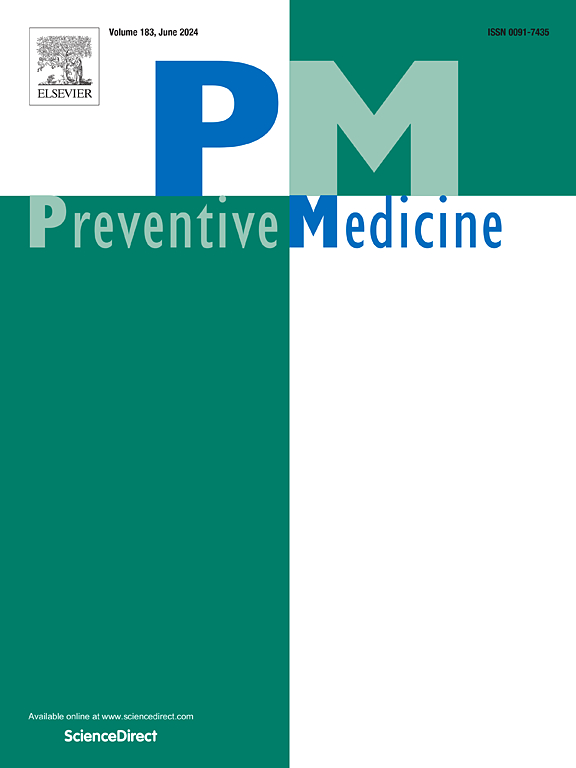Predicting cognitive function among Chinese community-dwelling older adults: A supervised machine learning approach
IF 3.2
2区 医学
Q1 MEDICINE, GENERAL & INTERNAL
引用次数: 0
Abstract
Objective
Identifying cognitive impairment early enough could support timely intervention of cognitive impairment and facilitate successful cognitive aging. We aimed to build more precise prediction models for cognitive function using less variable input among Chinese community-dwelling older adults.
Methods
We used data from a prospective cohort of 13,906 older adults aged 60 years and above from the nationally representative China Health and Retirement Longitudinal Study (CHARLS) 2011–2020. The Gradient Boosting Classifier (GBC) and gradient boosting regressor (GBR) models were used to predict an individual's current cognitive function. For future cognition prediction, we trained GBR models to analyze the prediction error over the years.
Results
Among 68 features, ten features were finally selected to develop the model: education attainment, childhood friendship, age, instrumental activities of daily living (IADLs), hukou type, mobility, sleep duration, gender, residence, and social participation. Our model exhibited robust performance in predicting current and future cognitive function. When an individual's current cognitive function was assessed as a dichotomous classification of cognitive impairment presence, the GBC model achieved an area under the receiver operating characteristic (ROC) of 0.832. When the outcome was forecasted as a continuous variable, the model achieved a root mean square error (RMSE) loss of 3.356 in the test set. For predicting future cognition, models taking into account the current cognitive state demonstrated superior performance.
Conclusions
Our study offers a practical tool to aid in the early identification of cognitive impairment, thus supporting timely interventions in the community environment and potentially contributing to successful cognitive aging.
预测中国社区老年人的认知功能:一种有监督的机器学习方法
目的早期发现认知功能障碍有助于及时干预认知功能障碍,促进认知老化的顺利进行。我们的目的是在中国社区居住的老年人中使用较少的变量输入来建立更精确的认知功能预测模型。方法:我们使用的数据来自具有全国代表性的中国健康与退休纵向研究(CHARLS) 2011-2020年的13906名60岁及以上老年人的前瞻性队列。使用梯度增强分类器(GBC)和梯度增强回归器(GBR)模型预测个体当前的认知功能。对于未来的认知预测,我们训练GBR模型来分析多年来的预测误差。结果从68个特征中筛选出10个特征:受教育程度、童年友谊、年龄、日常生活工具活动(IADLs)、户口类型、流动性、睡眠时间、性别、居住地和社会参与。我们的模型在预测当前和未来的认知功能方面表现出强大的性能。当个体当前的认知功能被评估为存在认知障碍的二分类时,GBC模型的受试者工作特征(ROC)下面积为0.832。当结果作为连续变量进行预测时,该模型在测试集中的均方根误差(RMSE)损失为3.356。在预测未来认知方面,考虑当前认知状态的模型表现出较好的性能。结论sour研究为早期识别认知功能障碍提供了一种实用的工具,从而支持在社区环境中及时干预,并可能为成功的认知衰老提供帮助。
本文章由计算机程序翻译,如有差异,请以英文原文为准。
求助全文
约1分钟内获得全文
求助全文
来源期刊

Preventive medicine
医学-公共卫生、环境卫生与职业卫生
CiteScore
7.70
自引率
3.90%
发文量
0
审稿时长
42 days
期刊介绍:
Founded in 1972 by Ernst Wynder, Preventive Medicine is an international scholarly journal that provides prompt publication of original articles on the science and practice of disease prevention, health promotion, and public health policymaking. Preventive Medicine aims to reward innovation. It will favor insightful observational studies, thoughtful explorations of health data, unsuspected new angles for existing hypotheses, robust randomized controlled trials, and impartial systematic reviews. Preventive Medicine''s ultimate goal is to publish research that will have an impact on the work of practitioners of disease prevention and health promotion, as well as of related disciplines.
 求助内容:
求助内容: 应助结果提醒方式:
应助结果提醒方式:


